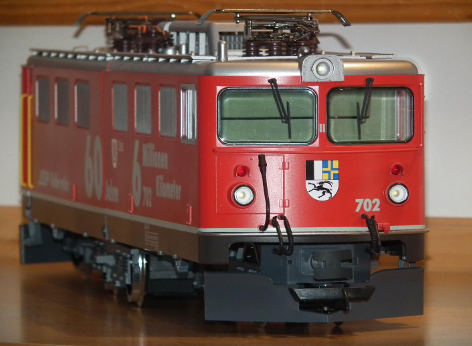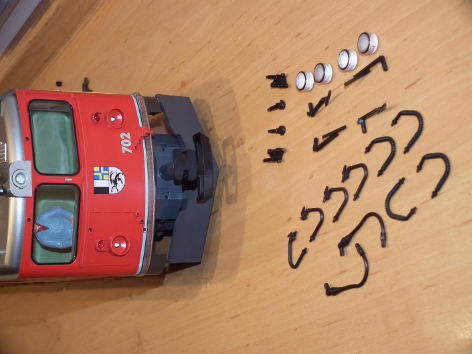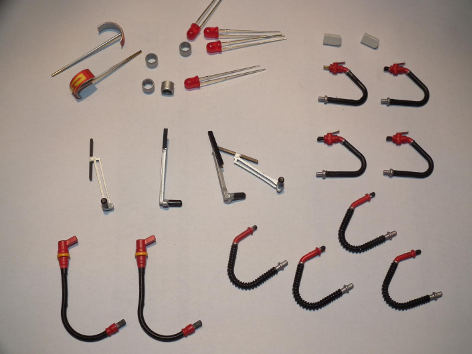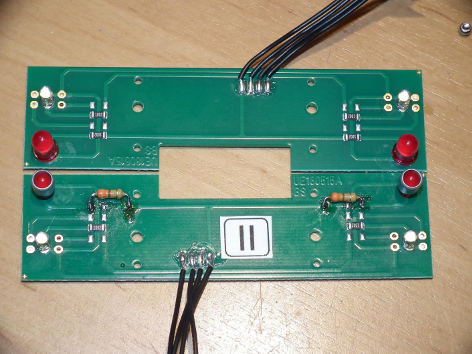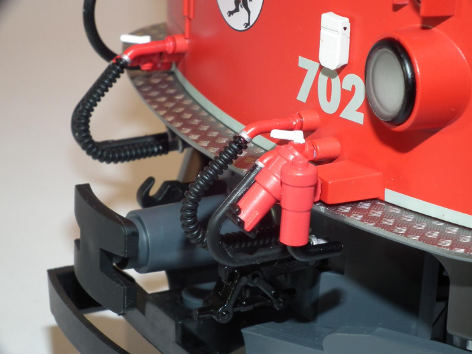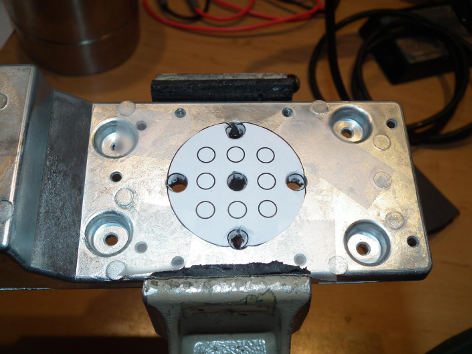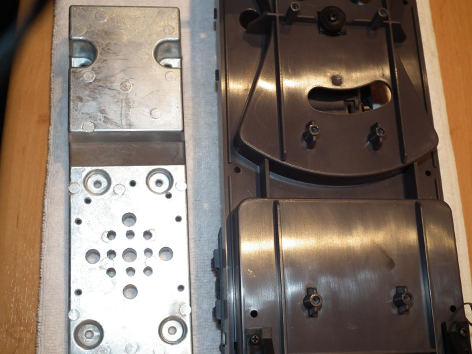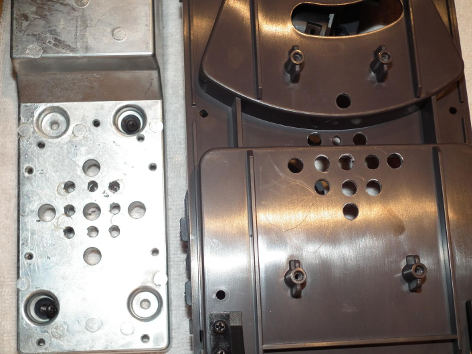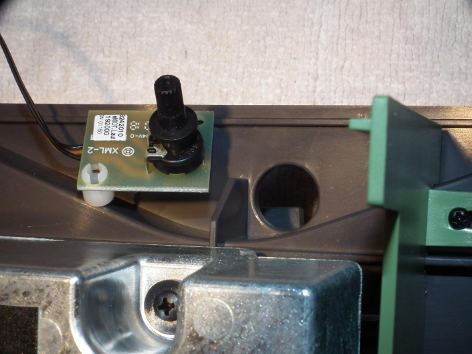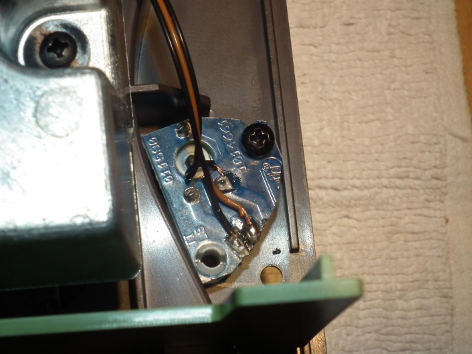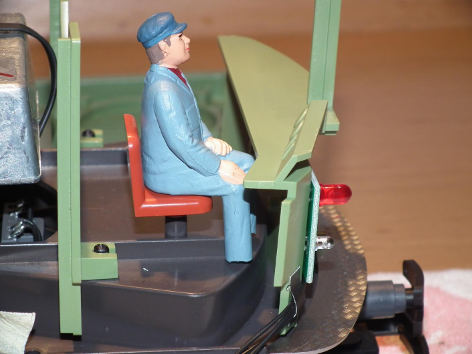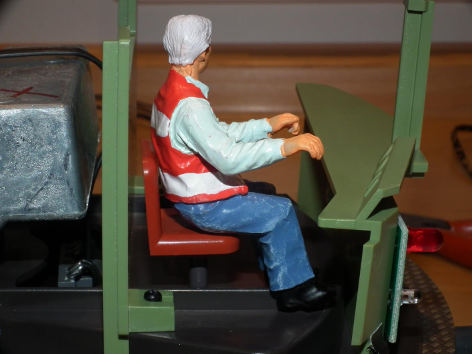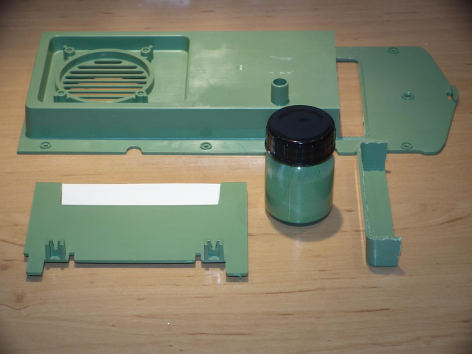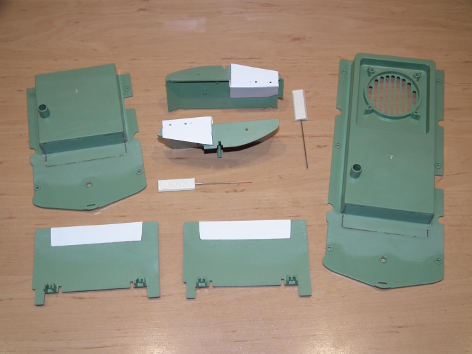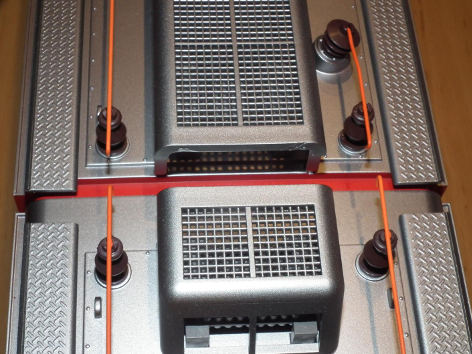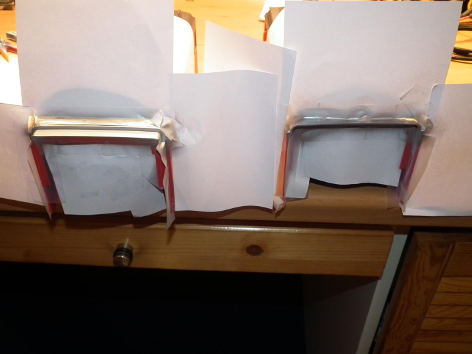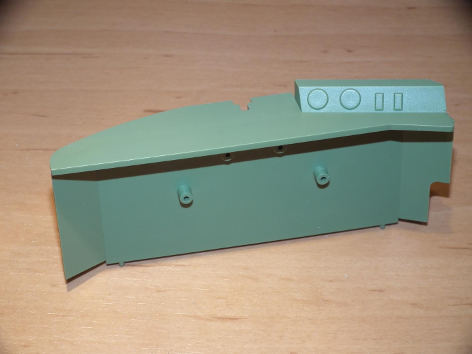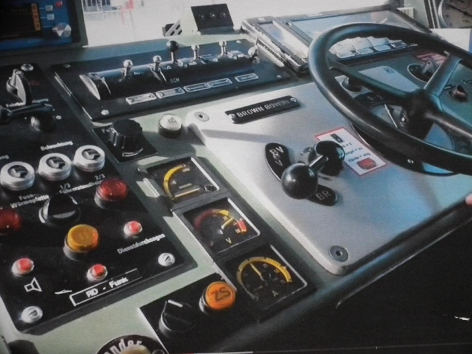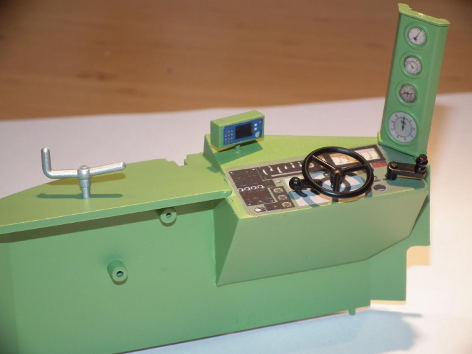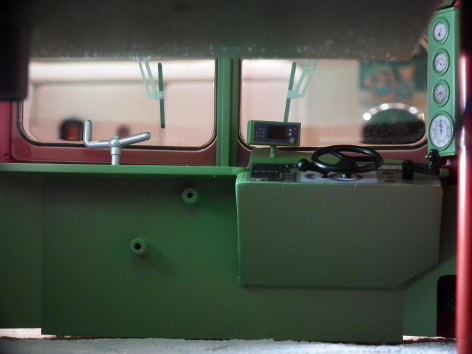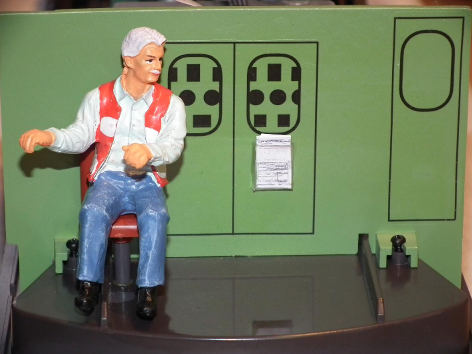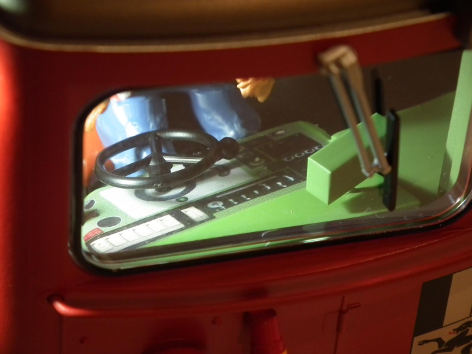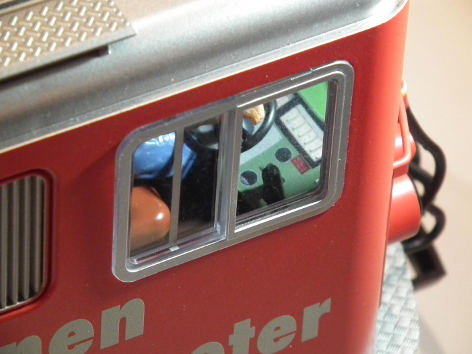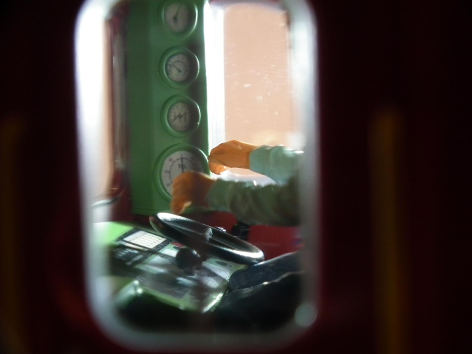Katzhagen - Archive - January 2020
Tarted up - RhB Ge 6/6 II
Both of the first production run's units made by the companies SLM, MFO and BBC were delivered in 1958. Since construction of the Bergell power station required up to 1000 metric tons of cement per day, a loco being capable of hauling 250 metric tons was required for the Albula line's 3.5% gradient. The at that time existing "Crocodiles" and Ge 4/4 I were not sufficient for accomplishing this task.
After the power station was completed the units predominantly hauled express trains on the Albula line. Nowadays the 700s can be found mainly at the head of freight trains.
The model of the RhB's road number 702 introduced by LGB in fall 2019 is named "Curia" which is the Latin name of the Graubuenden canton's capital Chur. The model is nicely detailed, but offers the owner a bunch of possibilities for improvements which are described below.
The usual procedure with small parts having the wrong colour. Dismount, mask, prime, paint. In addition missing rings for the red tail lights, warning signs for the pantographs and front face sockets were made.
The prototype's red tail lights feature silver coloured rings which could be
implemented on the model only by replacing the red 5mm LEDs with 4mm LEDs.
This required a replacement of these LEDs' series resistors since the LEDs
mounted ex-factory are extreme low current types. The lower PCB is the
accordingly modified one.
The picture on the left shows the improved details and the ex-factory missing parts like the lightgrey socket and the water connector as well as a further socket.
The sound exit (virtually not being present) beneath the speaker is a story in itself...
Not only the number of holes in the metal block for the sound exit seems to be a tad too small... there even is no sound exit in the bodyshell's bottom at all !
The picture on the left shows the improved details and the ex-factory missing parts like the lightgrey socket and the water connector as well as a further socket.
The sound exit (virtually not being present) beneath the speaker is a story in itself...
Not only the number of holes in the metal block for the sound exit seems to be a tad too small... there even is no sound exit in the bodyshell's bottom at all !
Coaching for the sound exit - a template and more holes. A few drops of oil make for flawless drilling of the metal.
After the metal block got a few more holes it was used as a template for
drilling holes into the chassis. The now perforated bottom is an obstacle for
the sound no longer.
A potentiometer for the operation sound's volume had to be mounted since the mfx decoder not featuring a pot was replaced with a Massoth XLS-M1 decoder. Luckily, an alread existing hole in the chassis could be used - requiring a minor modification of the pot's PCB (pictures above and on the left).
The driver cabs provided for almost unlimited possibilities improving the cabs and to make them more prototypical. It's (almost) nothing what the vendee is presented with ex-factory here. It starts with a foot amputated, continues with missing instruments and ends with a fantasy control panel.
A potentiometer for the operation sound's volume had to be mounted since the mfx decoder not featuring a pot was replaced with a Massoth XLS-M1 decoder. Luckily, an alread existing hole in the chassis could be used - requiring a minor modification of the pot's PCB (pictures above and on the left).
The driver cabs provided for almost unlimited possibilities improving the cabs and to make them more prototypical. It's (almost) nothing what the vendee is presented with ex-factory here. It starts with a foot amputated, continues with missing instruments and ends with a fantasy control panel.
How is the loco driver expected to operate the dead-man switch without feet ? No way... moved the seat backwards... replaced the driver.
The seat's modification can be realized only if the inside roof lining is modified too, since it bears the LGB panto drives which extend into the cab area. Hence the smaller panto drives made by Massoth are required for this modification as well. The picture on the upper right shows the modified roof linings, control panels and separating walls as well as the gauges panels prepared for painting.
Apropos painting... the stripe between both of the housing's parts was lacking the silvery colour. Another no-go. Masking, priming, painting. Maskieren, grundieren, lackieren. I meanwhile have it off pat...
The control panel put in by LGB and the prototype. Similarities are barely recognizable. Yet another no-go.
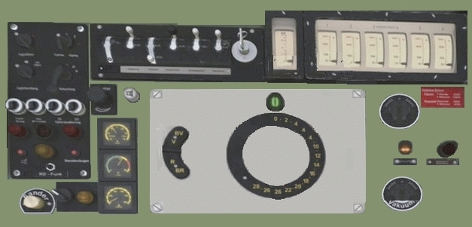
Pictures of the prototype and screenshots of a simulator provided for a nice basis for decals and stickers for the modified control panels' and instruments' as well the separating walls' design.
Two insights into the dolled up cab from different perspectives before reassembly.
Driver cab insights after reassembly. For a few $$ more the folks at Goeppingen should have been able to provide the same.
And yet again the fun with these bricolages has come to an end. Here comes the 702...
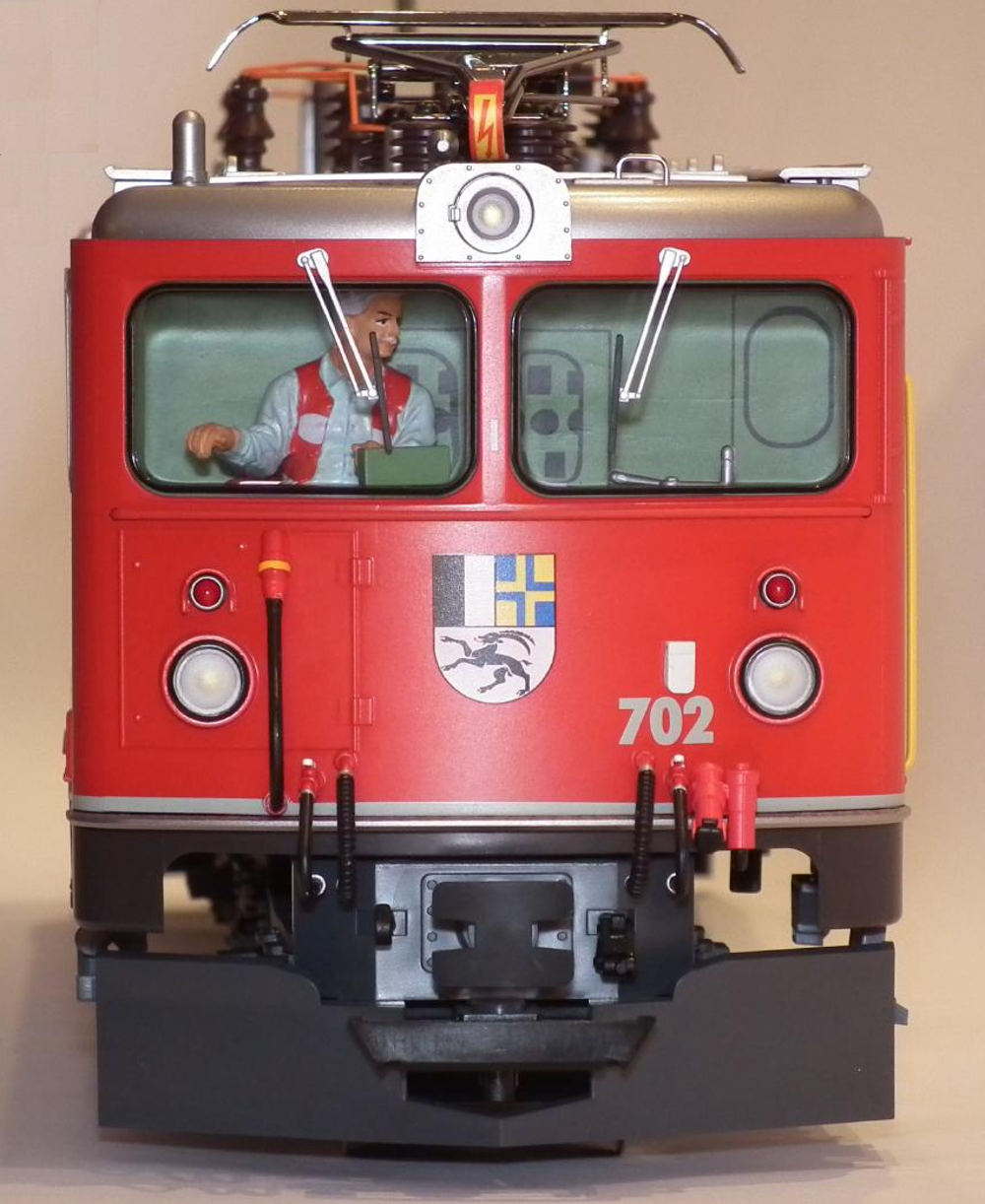
And finally the mandatory before and after comparison picture which shows the difference at a glance:

A documentation of replacing the LGB panto drives with the Massoth ones is superfluous since it's nothing but removing screws, plugs and drives and then inserting the Massoth drives, screws and plugs again.
The result (no artistic value intended):
If the factory design of the driver's cab is too simple for you as well,
please feel free to download the appropriate decals and stickers.
November 2019 | Archive "Current Affairs" | February 2020

